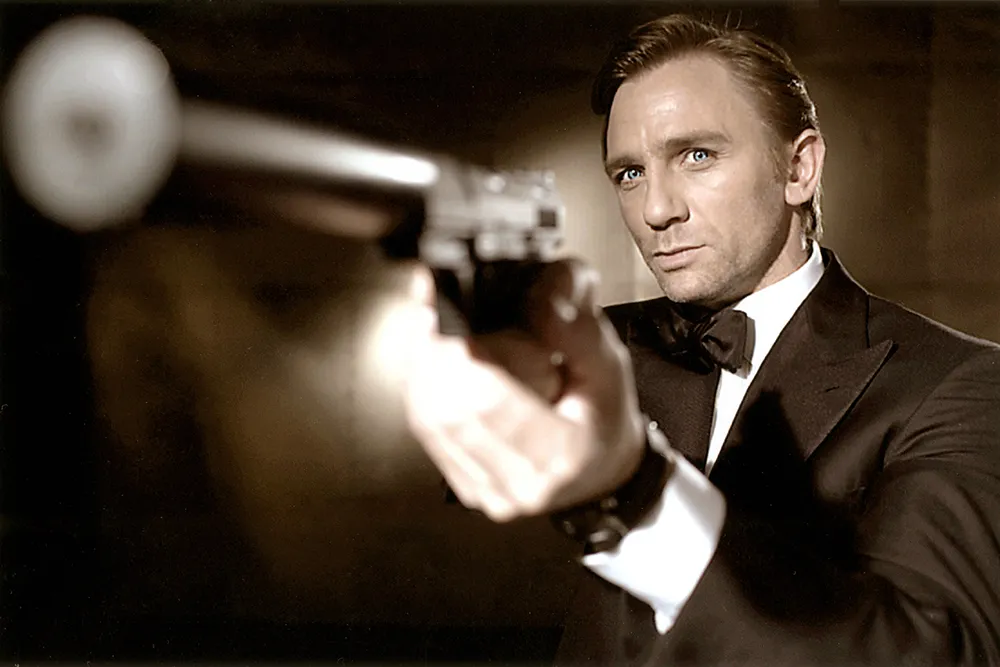James Bond: A Comprehensive OverView And Biography
James Bond, the iconic British secret agent created by author Ian Fleming, has become one of the most famous fictional characters in the world. Known for his suave demeanor, high-tech gadgets, and ability to save the world from dangerous villains, Bond has captivated audiences for decades. This biography provides an in-depth look at James Bond’s origins, career, lifestyle, family, and his journey from a literary character to a global pop culture phenomenon.
Creation and Origins of James Bond
Ian Fleming’s Creation of Bond
James Bond was created by British author Ian Fleming, who introduced the character in his first novel Casino Royale, published in 1953. Fleming, a former British naval intelligence officer during World War II, used his experiences in espionage and military service to create the character. Bond was conceived as a no-nonsense secret agent who was cool under pressure, skilled in hand-to-hand combat, and an expert in spy craft.
Fleming drew inspiration for the character from various sources, including real-life spies, friends, and his own personal experiences. Bond was designed as a man of action, with a penchant for luxury, adventure, and women. His character quickly gained popularity due to his relatability and the intrigue of the world of espionage.
The Name “James Bond”
The name “James Bond” was chosen by Fleming after the American ornithologist James Bond, whose book Birds of the West Indies Fleming had used for reference during his writing. Fleming, a bird-watcher himself, found the name simple and strong, which reflected the kind of character he envisioned for his spy.
The Literary James Bond
Fleming’s Bond Novels
Fleming wrote a total of 12 James Bond novels and 2 short story collections. Some of the most notable novels in the series include:
- Casino Royale (1953)
- Live and Let Die (1954)
- Moonraker (1955)
- Diamonds Are Forever (1956)
- Dr. No (1958)
- Goldfinger (1959)
- Thunderball (1961)
- The Spy Who Loved Me (1962)
- On Her Majesty’s Secret Service (1963)
- You Only Live Twice (1964)
- The Man with the Golden Gun (1965)
- Octopussy and The Living Daylights (1966)
Fleming’s books established many of the traits associated with Bond, such as his ability to charm women, his love for gambling and luxury, and his interactions with allies and adversaries within MI6, especially his boss M.
Bond’s Personality in the Novels
In the novels, Bond is portrayed as a cold, methodical character who often resorts to violence to achieve his goals. He is known for his sharp intelligence and physical prowess, but also for his ability to engage with his enemies psychologically. While initially depicted as a more morally ambiguous character, Bond’s character evolved over the course of Fleming’s writing, with more attention paid to his emotions and vulnerabilities in later works.
James Bond in Film: Transition to Cinema
The First Bond Film: Dr. No (1962)
The character of James Bond made his cinematic debut in 1962 with the film Dr. No, produced by Harry Saltzman and Albert R. Broccoli under the banner of Eon Productions. Sean Connery was cast in the lead role, and his portrayal became the template for future depictions of Bond. The film was a massive success, grossing over $16 million globally, which was impressive for its time. It also marked the beginning of what would become one of the most successful film franchises in history.
Sean Connery’s Iconic Bond
Sean Connery’s portrayal of James Bond became legendary. His portrayal embodied the smooth, charismatic, and tough agent that audiences adored. Connery’s Bond was marked by a certain level of arrogance, humor, and confidence, making him a dominant figure in pop culture.
Connery starred in seven Bond films, including:
- Dr. No (1962)
- From Russia with Love (1963)
- Goldfinger (1964)
- Thunderball (1965)
- You Only Live Twice (1967)
- Diamonds Are Forever (1971)
- Never Say Never Again (1983, a non-Eon film)
While Connery left the role after You Only Live Twice, he returned for Diamonds Are Forever and Never Say Never Again, with a few other actors taking on the role in between.
Other Bond Actors
Over the years, several actors have portrayed James Bond in the Eon Productions films, each bringing their unique take on the character:
- George Lazenby (1969) – On Her Majesty’s Secret Service
- Roger Moore (1973–1985) – Known for bringing more humor to the character, Moore starred in seven Bond films, including Live and Let Die, The Spy Who Loved Me, and Moonraker.
- Timothy Dalton (1987–1989) – Dalton portrayed Bond with a more serious tone in The Living Daylights and Licence to Kill.
- Pierce Brosnan (1995–2002) – Brosnan revitalized the Bond franchise with films like GoldenEye, Tomorrow Never Dies, The World Is Not Enough, and Die Another Day.
- Daniel Craig (2006–2021) – Craig brought a darker, more emotionally complex version of Bond to the screen in films such as Casino Royale, Skyfall, and No Time to Die. Craig’s portrayal of Bond is marked by a deeper exploration of Bond’s psychological turmoil.
James Bond’s Lifestyle and Preferences
Bond’s Iconic Traits
James Bond is often seen as the epitome of sophistication, enjoying the finest luxuries that life has to offer. Some key elements of his lifestyle include:
- Luxury Cars: Bond is famously associated with Aston Martin, among other high-end vehicles. The Aston Martin DB5 became one of the most iconic cars in film history, featuring gadgets and technology that reflect Bond’s high-tech spy life.
- Fashion: Bond’s clothing is often impeccable, typically wearing fine suits and tuxedos, most notably tailored by Tom Ford in recent films. His stylish image is central to his persona as the suave, professional spy.
- Gadgets: Thanks to his association with Q Branch, Bond is famous for his innovative gadgets, such as the Aston Martin DB5’s ejector seat, exploding pens, and laser watches.
- Alcohol and Food: Bond’s drink of choice is the iconic vodka martini, famously ordered “shaken, not stirred.” He is also known for his preference for luxury foods, especially caviar.
Women in Bond’s Life
Bond’s relationships with women are an integral part of his character. In the novels, Bond has numerous relationships with women, often charming them with his wit and charisma. He has had romantic entanglements with various women, many of whom are portrayed as Bond girls, often played by famous actresses. These relationships are typically short-lived and are part of the character’s allure.
Fame and Success
Global Pop Culture Phenomenon
James Bond has become a cultural icon since his creation in the 1950s. He has transcended the realm of spy novels and films, influencing everything from fashion and music to language and attitudes toward masculinity. Bond’s influence can be seen in various adaptations, parody films, and the portrayal of spies in pop culture.
Bond’s fame has also resulted in several video games, comic books, and novelizations. GoldenEye 007 for the Nintendo 64 is one of the most iconic video games based on the character, which helped solidify Bond’s legacy in the world of gaming.
Bond’s Cultural Impact
The James Bond franchise is one of the longest-running and most financially successful in cinema history. As of 2021, the series has grossed over $7 billion globally, making it one of the highest-grossing franchises of all time. The character’s timeless appeal, thrilling action scenes, and stunning locations continue to captivate audiences around the world.
James Bond’s Legacy
Bond as a Symbol of Heroism and Glamour
James Bond represents the ideal of a strong, heroic figure who faces seemingly insurmountable odds with intelligence, bravery, and a sense of duty to his country. Despite his flaws, Bond’s steadfast sense of loyalty, duty, and justice make him a hero who resonates with audiences across generations.
He has become a symbol of masculinity, confidence, and coolness, with each actor bringing a new layer to the character. Bond’s moral compass, while occasionally murky, is grounded in his desire to protect the innocent and uphold the values of the British government.
Future of James Bond
The future of James Bond remains a topic of much debate and speculation. With Daniel Craig’s departure after No Time to Die, questions about the next actor to portray Bond have been raised. The franchise will continue to evolve, but the legacy of James Bond as one of the most iconic and enduring characters in entertainment history will undoubtedly live on for generations to come.
Conclusion
James Bond has become more than just a spy; he is a cultural institution that represents the very essence of action, intrigue, and adventure. From his literary origins in Ian Fleming’s novels to his portrayal in over 25 films, Bond has captivated millions around the world with his charisma, gadgets, and daring exploits. His legacy is secure, and James Bond will continue to inspire and entertain for many years to come.






